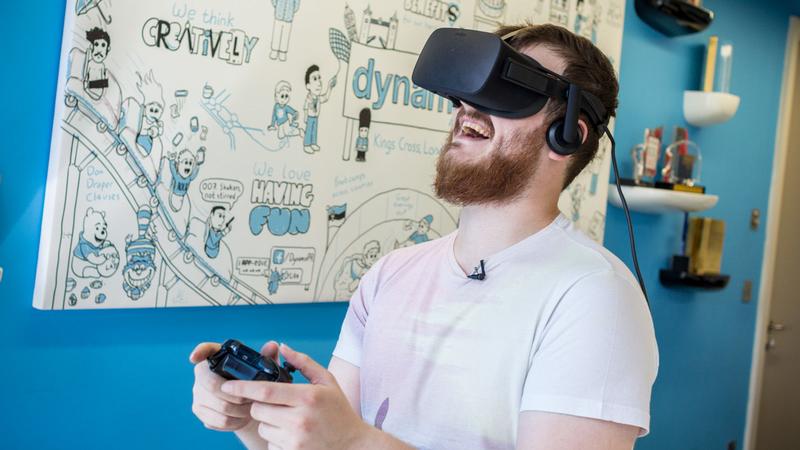If you’re still new to the world of VR, check out our complete guide to VR
Minimum & Recommended PC spec
The Oculus Rift isn’t cheap at £400, and you’ll also need a fairly impressive gaming PC to run it. Oculus has provided recommended specs for getting the “full Rift experience”, which you can find below. Don’t be too disheartened if your PC falls short, as it’s only the recommended setup and not the minimum.
Recommended spec
Nvidia GTX 970 or later/AMD Radeon R9 290 or greaterIntel i5-4590 CPU or greater8GB+ of RAMHDMI 1.3 video output3x USB 3.0 ports, plus 1x USB 2.0 portWindows 7 SP1 64-bit or newer
In terms of the minimum spec required to power your Oculus Rift VR experiences, you’re looking at the following:
Minimum spec
Nvidia GTX 960 or greaterIntel i3-6100/AMD FX 4350 or greater CPU8GB+ RAMCompatible HDMI 1.3 port1x USB 3.0, 2x USB 2.0Windows 8 or newer
If it’s anything less than this then you may struggle to run VR experiences on your PC. However, if your PC is compatible, continue on to your setup how-to.
How to set up Oculus Rift
- The first step is to clear an area for your headset and additional accessories to sit on your desk when not in use. You’ll be switching between the various methods of input (Xbox One Controller, Oculus Remote, Oculus Touch) and since the former two aren’t tracked by the Oculus Rift, you won’t be able to find them when the headset is on.
- Once you’ve outlined an area for your Oculus Rift to live, it’s time to download the Oculus Rift setup software from the Oculus website. Unlike the HTC Vive with its many components, the Oculus Rift is fairly simple, offering something akin to a plug-n-play experience. The setup will also figure out if you have the required hardware in order to run the Oculus Rift properly.
- Once the setup has confirmed that your PC is up to scratch, it’ll prompt you to plug in each of the Oculus Rift’s cables – a HDMI cable and two USBs, one for the headset and one for the sensor. While this may be standard for PC gamers, it’s worth pointing out that the HDMI cable needs to be plugged into the graphics card’s dedicated HDMI port and not anywhere else.
- Once you’ve plugged in your headset and sensor, it’s time to set up the USB 3.0-enabled sensor. The important thing to stress here is that there’s nothing obstructing the sensor’s view – if it can’t ‘see’ the headset, you’ll lose tracking. It’s recommended to have around 3ft between you and the sensor, but it’s not that much of a deal. Users report having it much closer, some even only at arm’s length, with no loss of tracking.
- Finally, it’s time to hook up the controllers. With regards to the Oculus Touch controllers, you’ll need to hold down the action button to turn them on. They should connect automatically once you reach the appropriate part of the on-screen setup. The Xbox One controller requires batteries (supplied) and simply requires the user to plug it in via microUSB cable, and push the sync button on both the controller and adaptor. Et viola! Your Oculus Rift should now be set up and ready to go. Not sure which games to download first? Take a look at our choice of the best games for the Oculus Rift. Lewis Painter is a Senior Staff Writer at Tech Advisor. Our resident Apple expert, Lewis covers everything from iPhone to AirPods, plus a range of smartphones, tablets, laptops and gaming hardware. You’ll also find him on the Tech Advisor YouTube channel.
